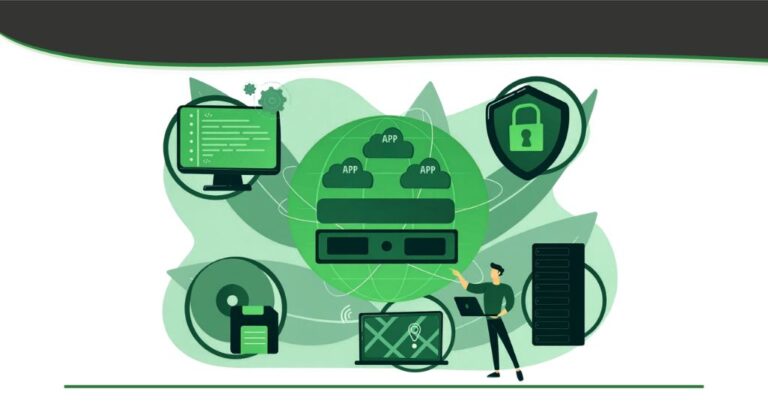APIs are no longer background infrastructure, they are the digital nervous system of modern business. They connect applications, move data across cloud services, enable mobile experiences, and tie together everything from customer portals to industrial IoT devices. Yet, this same connectivity makes APIs one of the most targeted, and most vulnerable, attack surfaces in the enterprise.
In today’s threat landscape, API security isn’t a niche concern. It is the frontline of data protection.
Why APIs Are the Prime Target
APIs expose the logic, functions, and data that power an organization’s services. A single poorly secured endpoint can be the open door to sensitive customer data, intellectual property, or even control of critical infrastructure.
Unlike traditional web applications that pass through well-established controls like web application firewalls, APIs often bypass these defenses. Attackers exploit this gap through injection attacks, session hijacking, credential stuffing, and enumeration techniques, often with devastating results. According to industry reports, API-related breaches have risen sharply in the last three years, highlighting the urgency for enterprises to rethink their security posture.
Beyond Perimeter Defenses: The New Security Stack
Securing APIs requires a layered approach, moving beyond simple network boundaries. Effective strategies include:
- Application Layer Encryption: Protecting sensitive data at the point of creation inside the application itself, ensuring that even if traffic is intercepted, the payload is unreadable.
- Database Encryption: Securing data at rest so that backend systems remain resilient, even if attackers breach the application layer.
- Identity and Access Management (IAM): Enforcing least-privilege principles, ensuring that only authorized users, systems, and services can call APIs or access specific resources.
- Data Loss Prevention (DLP): Monitoring and controlling data exfiltration through APIs, preventing both accidental leakage and malicious transfers.
- Application Security Testing: Proactively identifying vulnerabilities in API code and integrations before they reach production.
When these tools operate together, APIs can be hardened against both opportunistic attackers and well-funded adversaries.
The Business Impact of an API Data Breach
The consequences of an API-driven data breach extend beyond technical clean-up. They erode customer trust, trigger regulatory penalties, and can grind operations to a halt. In sectors like finance, healthcare, and critical infrastructure, the ripple effects of a breach can impact millions of people.
As APIs increasingly underpin supply chains and third-party integrations, a single compromised API can become a vector for systemic risk, propagating across partners and ecosystems.
From Risk to Resilience: How GaraTrust Secures APIs
This is where Garantir comes in. Enterprises can’t rely on fragmented tools alone, they need unified, cryptographically secure foundations for protecting API interactions. Garantir’s flagship platform, GaraTrust, delivers just that.
With GaraTrust, private keys used for API authentication, signing, and encryption never leave secured hardware, dramatically reducing the risk of compromise. Its client-side hashing architecture ensures that cryptographic operations are both high-performance and fully auditable, supporting use cases like:
- API Request Signing to guarantee message integrity.
- Mutual TLS for securing machine-to-machine API communication.
- Secure Code Signing for API libraries, SDKs, and microservices.
- Centralized Cryptographic Policy Enforcement, ensuring that all APIs adhere to enterprise-wide standards without slowing down developers.
This approach doesn’t just secure APIs, it aligns them with broader enterprise security initiatives like zero trust, compliance mandates, and CNSA 2.0 cryptographic modernization.
From Point Solutions to Platform Thinking
The mistake many enterprises make is treating API security as an isolated problem, solved by bolt-on controls. In reality, APIs are woven into every part of the enterprise fabric. They interact with IAM systems, touch databases, enforce (or bypass) DLP policies, and serve as conduits for encrypted traffic.
To truly secure the digital nervous system, organizations must shift from point solutions to platform-level cryptographic management. This is where Garantir is leading, offering a centralized service that unifies API security with code signing, TLS, SSH, and other enterprise-critical cryptographic functions.
The world has changed: every company is now an API company. From banks to hospitals to manufacturers, APIs are how value is created and delivered. And as with any nervous system, if the signals can be intercepted or manipulated, the entire organism is at risk.
API security is the new frontline of data protection.
By embedding strong cryptographic protections, enforcing unified policies, and leveraging platforms like Garantir’s GaraTrust, enterprises can stay resilient in the face of evolving threats, without sacrificing performance, agility, or innovation.


